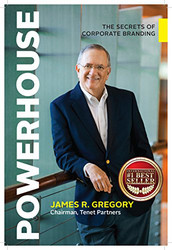Great packaging must establish an intimate relationship with consumers. Packaging is the only brand touchpoint where consumers are actually physically engaged with your brand 24/7. From its purchase, to its storage, to its usage and to it being discarded your packaging forms a personal relationship with consumers. Packaging must take advantage of this opportunity. It must grab attention, make that right first impression and ultimately establish an emotional connection.
Here are five tips for ensuring that your brand’s packaging is dressed for success:
1. Packaging must be the 5th P in your marketing mix
Those marketers who integrate packaging as part of their marketing mix, otherwise known as product, price, place and promotion have a better shot at success. They recognize packaging is a vital branding component from the onset. By involving internal and external cross-functional teams early in the process you with all the tools required to plan for the functional, aesthetic and emotional needs of your packaging. All components of your packaging from the top down and inside out must work in harmony to ensure that it engages with consumers on a multitude of levels—size, shape, materials, dispensing features, color, printing techniques, etc.
2. Packaging is your key differentiator
Yes, this may be an obvious statement. However, when you take a look at the statistics, you begin to understand how challenging this truly is. On average, consumers make 2.2 trips per week to the supermarket and are exposed to 40,000+ products on shelf. It is interesting to note that the total amount of products to which a consumer is exposed is almost equal to the amount of new products launched within one year. And only 5-8 percent of these new products have a chance of surviving. With numbers as staggering as these, the need for your packaging to differentiate and stand out on shelf is vital for your brand’s long-term success. With all things being equal, research has proven that consumers will use packaging as the tiebreaker in making a final purchase decision. Be smart and allocate the appropriate amount of resources that will help your packaging make a compelling statement on shelf.
3. Less is so much more
Packaging is a very valuable piece of real estate oftentimes with very limited space that needs to work extremely hard for you. While your packaging must reinforce your brand’s promise, it doesn’t have to tell the entire story. Focus on one core message that is relevant for your target audience and use the back panel and/or the web and social media to tell the complete story. Too much information can create confusion with consumers not being able to focus in on any one message. This could result in consumers paying more attention to your competition.
4. Don’t overpromise, but do over-deliver
Your packaging can fool me once, but it won’t fool me twice. One of packaging’s primary goals is to grab consumers’ attention enough to make them want to commit to trial and purchase. This is especially true if you are marketing a new product. While your packaging must dress your brand for success, it must be in alignment with consumer expectations. If what is on the inside either does not meet or exceed expectations as established by what is on the outside, you may get trial, but you will not get that much needed repeat purchase that will help guarantee long-term success.
5. Think well beyond the physical
Consumer products will always require a three-dimensional packaging for protection, transportation, storage, dispensing, etc. – something that cannot be replaced by technology. However, when developing your packaging, you must keep in mind the role technology plays in connecting your brand to consumers, especially in how the 3-D packaging is represented. It used to be that 80% of all purchase decisions were made in store. Now, it is the total opposite. The stats show that 80 percent of purchase decisions are now being made at home with consumers more diligent about using on-line research to pre-determine what they want to buy. It is no longer enough for your packaging to make a good first impression on shelf. How your packaging appears on the web, mobile and social media must be taken into consideration as more and more consumers of all ages are using technology to access information about your brand.




